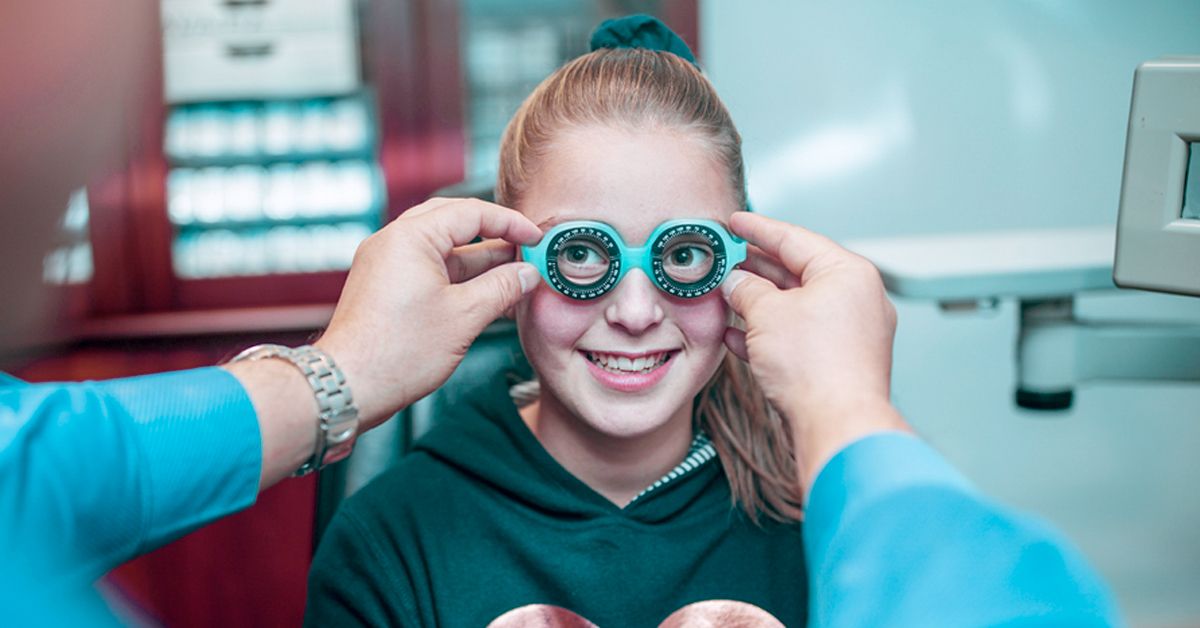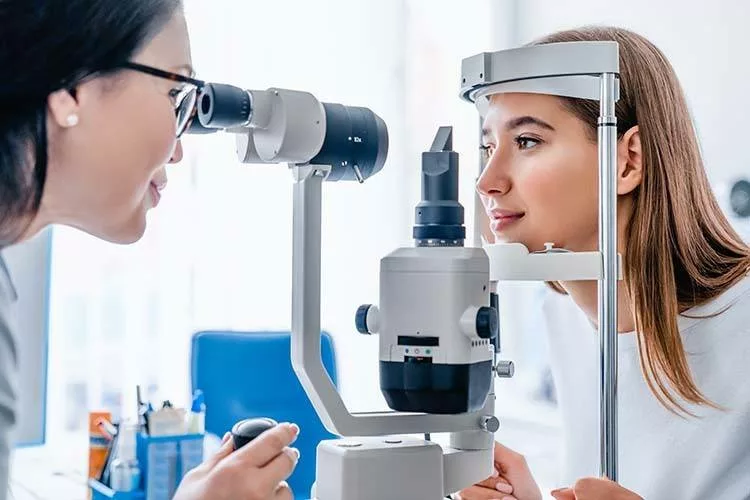Why Selecting an Eye Doctor Optometrist is Important for Your Eyes
Why Selecting an Eye Doctor Optometrist is Important for Your Eyes
Blog Article
Exploring the most up to date Technological Improvements in Optometry and What They Mean for Optometrists
In the ever-evolving area of optometry, current technological advancements are improving how practitioners come close to eye treatment. From the accuracy of Optical Comprehensibility Tomography to the nuanced understandings provided by AI-driven diagnostic devices, these advancements are setting new standards in patient evaluation and therapy. Teleoptometry is poised to redefine accessibility, making sure that knowledge transcends geographical restrictions. As these developments penetrate the technique, optometrists are confronted with the difficulty of embracing these tools to improve individual end results. Yet, the inquiry continues to be: just how will these technical shifts redefine the roles and responsibilities within the occupation?
Technologies in Diagnostic Equipment
Progressing the area of optometry, advancements in diagnostic tools have actually transformed the method eye treatment experts assess and diagnose eye problems and aesthetic disabilities. The past decade has observed significant technical innovations, allowing even more extensive and precise assessments.
An additional secret development is the intro of advanced corneal topography systems, which map the surface curvature of the cornea with accuracy. These devices are specifically valuable for fitting call lenses and diagnosing corneal problems. Electronic retinal imaging has changed standard ophthalmoscopy, using comprehensive, breathtaking sights of the retina that assist in thorough aesthetic examinations.
The development of wavefront aberrometry has actually additionally been important, enabling the evaluation of refractive errors with unparalleled precision (Eye Doctor). This technology assists in customizing restorative lenses and boosting medical end results for refractive surgeries. Collectively, these analysis advancements encourage optometrists to deliver remarkable individual treatment, making sure very early treatment and customized treatment approaches, eventually enhancing visual health and wellness results
AI in Person Administration
Building on the structure of sophisticated diagnostic tools, the unification of artificial knowledge (AI) in individual monitoring stands for a transformative leap for optometry. AI systems are progressively employed to enhance efficiency, accuracy, and personalization in individual care. By examining substantial quantities of data, AI can identify patterns and forecast prospective eye conditions, allowing eye doctors to tailor treatments a lot more effectively. This ability is vital in taking care of chronic eye conditions such as glaucoma and diabetic person retinopathy, where very early discovery and continuous tracking are key.
Furthermore, AI-driven systems facilitate structured individual communications and management processes. Automated scheduling, digital assessments, and customized follow-up plans not only improve person contentment but also optimize time monitoring for experts. These systems can triage clients based upon the necessity of their conditions, making sure that those in vital demand obtain prompt attention.
In addition, AI boosts decision-making by giving eye doctors with evidence-based recommendations and treatment paths. By integrating information from digital health and wellness records, AI devices use understandings that educate medical decisions, reducing the threat of errors and enhancing individual end results. As AI continues to advance, its role in client management will likely increase, improving the landscape of optometric treatment.
Breakthroughs in Retinal Imaging
In the realm of optometry, retinal imaging has actually seen impressive technical innovations that are enhancing analysis abilities and individual treatment. Developments such as Optical Coherence Tomography (OCT) and fundus photography have actually revolutionized exactly how eye doctors examine the retina and imagine. OCT, in specific, gives high-resolution, cross-sectional photos of the retina, permitting for the detailed assessment of its layers. This ability is invaluable for early discovery and administration of conditions like glaucoma, diabetic person retinopathy, and age-related macular deterioration.
Boosted imaging modalities like OCT angiography are further refining diagnostic accuracy. This non-invasive find here technique maps blood circulation in the retina, offering crucial insights right into vascular health and wellness without the requirement for dye shots. Furthermore, flexible optics innovation is being incorporated into retinal imaging systems to deal with eye aberrations, delivering extraordinary picture clarity. Such advancements assist in the identification of min retinal modifications that might indicate disease progression.
In addition, innovations in expert system are enhancing retinal imaging by making it possible for automated analysis of large datasets. These systems help eye doctors in identifying patterns indicative of pathology, therefore enhancing diagnostic accuracy and effectiveness. Jointly, these advancements are transforming retinal imaging right into a foundation of modern eye treatment, enhancing results and broadening therapeutic possibilities.
Teleoptometry's Growing Role
Teleoptometry is progressively ending up being a crucial component of eye care, driven by find out here now improvements in electronic communication and analysis tools. This is specifically valuable in underserved and country locations where access to specialized eye care is commonly minimal.
The integration of man-made intelligence (AI) further enhances teleoptometry, allowing the evaluation of visual data and aiding in the discovery of ocular problems such as glaucoma and diabetic person retinopathy. AI-powered formulas can swiftly interpret intricate imaging information, offering eye doctors with beneficial insights that reinforce scientific decision-making.
Moreover, teleoptometry sustains continuity of treatment with seamless assimilation with digital health documents (EHRs), allowing optometrists to maintain comprehensive individual backgrounds. When seeking advice from with various practitioners., this makes sure that clients get consistent and customized treatment even.
Despite these benefits, obstacles stay, consisting of making certain data protection and handling person assumptions. Nonetheless, teleoptometry stands for a significant stride in the direction of more available, effective, and patient-centered eye treatment. As technology advances, its duty is poised to expand further.

Future Trends in Eye Care
A myriad of cutting-edge fads is established to improve the future of eye treatment, driven by technical innovations and the evolving requirements of people. One substantial trend is the combination of artificial intelligence (AI) in diagnostics, which promises to boost the precision and effectiveness of eye examinations. AI algorithms can assess vast amounts of information from retinal images, potentially spotting conditions like diabetic person retinopathy and glaucoma earlier than standard approaches.
Furthermore, tailored medicine is getting traction in optometry, with hereditary screening educating tailored treatment plans. This technique aims to optimize client outcomes by customizing treatments to individual genetic accounts. Wearable technology, such as clever call lenses, is likewise on the perspective, using real-time monitoring of intraocular stress or sugar levels, thus providing continual understandings into ocular and systemic health.
The adoption of increased truth (AR) and online truth (VR) in training and client education is an additional arising pattern. These innovations supply immersive experiences that can enhance understanding and abilities both for clients and eye doctors. check my reference As these trends evolve, eye doctors need to remain abreast of technical innovations to provide sophisticated care, guaranteeing enhanced individual results and satisfaction in the dynamic landscape of eye care.
Final Thought

Jointly, these analysis innovations empower optometrists to provide exceptional individual treatment, making certain early treatment and customized therapy techniques, eventually boosting aesthetic wellness results.

As these innovations proceed to develop, optometrists must adjust and include them right into technique, inevitably maximizing process effectiveness and elevating the requirement of eye treatment supplied to patients.
Report this page